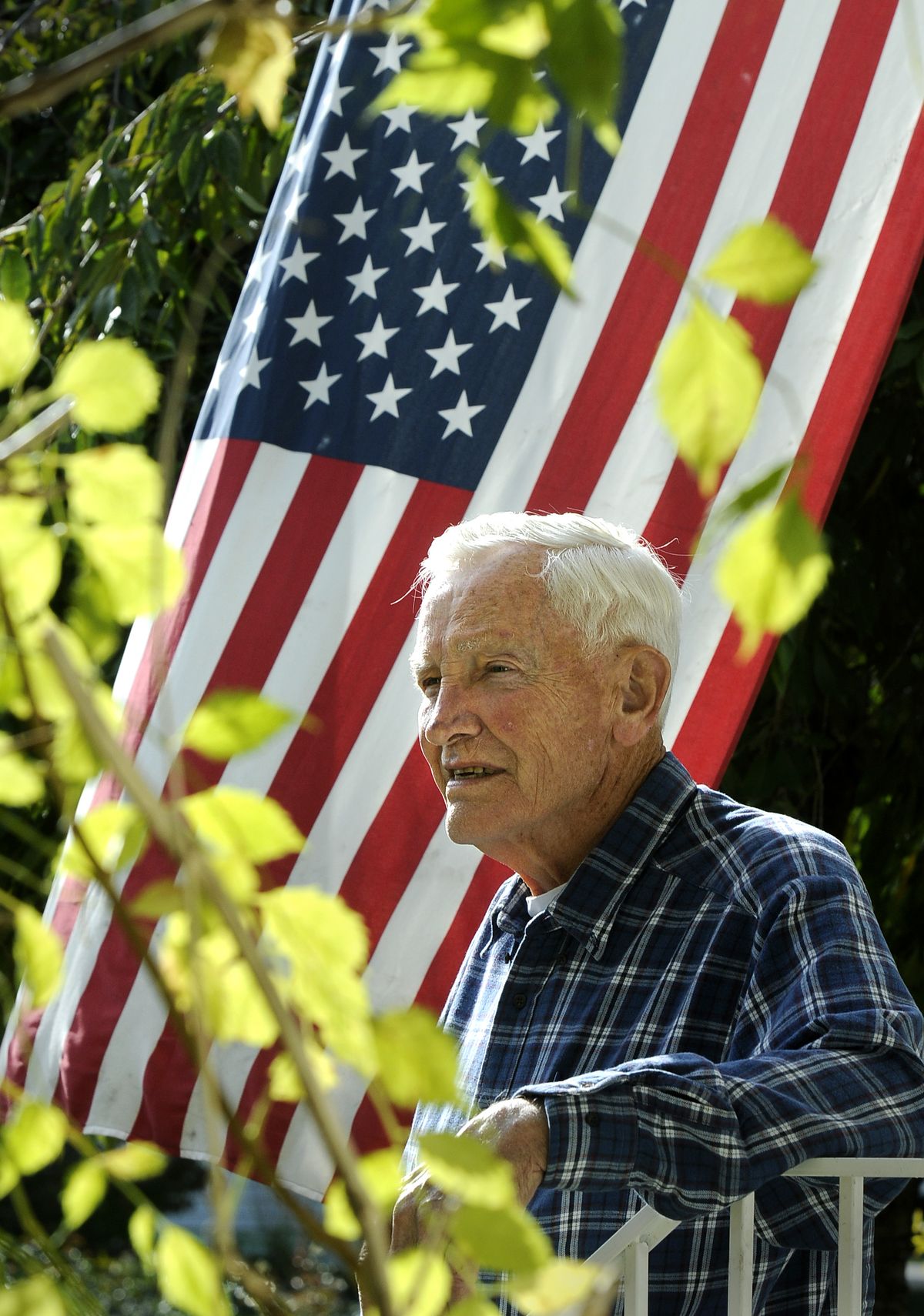Vets going to D.C.
Group funds trips to visit World War II Memorial

Bud Colburn helped load the wounded into vehicles during the attack on Pearl Harbor, and George Pettis earned a Purple Heart in one of the last sea battles of World War II.
Though they enlisted in the U.S. Navy upon graduation from Spokane high schools a year apart, the two veterans have never met.
They will soon get to know one another, thanks to a nonprofit organization dedicated to honoring veterans by flying them to the nation’s capital.
The Honor Flight Network on Friday will send Colburn and his grandson and Pettis and his son to Washington, D.C., where they will join other veterans visiting the World War II Memorial and other historic sites. The cost of the Honor Flight excursion, including room and board, is covered by donations.
Colburn and Pettis are the first Spokane-area vets to join an Honor Flight, said Jim McLaughlin, president of Honor Flight Network.
Honor Flight was founded by Earl Morse, a physician’s assistant in a Veterans Affairs medical clinic in Ohio, according to the network. Morse noted that many of his patients said they wanted to see the World War II Memorial after it opened in May 2004 but couldn’t afford the trip or weren’t physically able to travel commercially. Morse initially enlisted help from private pilots to fly veterans to Washington, D.C., but the program has grown rapidly and now uses commercial aircraft.
The two Navy vets will have some stories to tell on their trip.
Colburn signed up at 17, immediately upon graduating from North Central High School, class of 1941. He was serving aboard the USS Rigel, a base repair ship, when the first bombs struck on Dec. 7 of that year.
“I was just coming off messenger watch on the quarterdeck,” said Colburn, now 84. “There was a lot of confusion, of course, rumors of invasion. Everybody pitched in to help.”
As the USS Arizona sank in smoke and flames across the harbor, Colburn loaded the men who had been pulled from the water onto vehicles and drove them to a hospital.
“Some were practically dead.” Colburn recalled. “I guess I could close my eyes and see it, but I don’t want to.”
Later he served in New Zealand, New Caledonia and the Solomon Islands.
He extended his enlistment, and served until 1947. In 1951, he re-enlisted in the Navy “to beat the draft,” and served until 1967.
He and Coral Colburn, his wife of 62 years, live in south Spokane. He retired from the U.S. Postal Service in 1988.
Pettis also enlisted at 17 after graduating from Lewis and Clark High School in 1940.
By the following September, he was serving in President Franklin D. Roosevelt’s “secret war” in the Atlantic, escorting convoys aboard the destroyer USS Babbitt.
“We were at war, dropping depth charges, chasing German subs, the whole bit,” Pettis said. “Pearl Harbor was just, ‘Oh, now we’re official.’ ”
By 1944, Pettis was serving in the Philippines aboard another destroyer. It was at Ormoc Bay in December that he took 20 mm shrapnel in his left arm.
Pettis’ ship, the USS Moale, as well as the USS Sumner and USS Cooper, engaged the Japanese navy, which was resupplying the island of Leyte.
“Three destroyers went in, and two came out,” Pettis said.
An enemy torpedo sank the Cooper, and 191 crewmen died just after midnight on Dec. 3. The Moale and the Sumner took fire, too, but both escaped.
“It was probably the last surface battle of the war,” Pettis said.
Pettis was discharged in December 1945. He graduated from Gonzaga University in mechanical engineering in 1949, and retired from Boeing in Seattle in 1988. He and his wife, Shirley, live in south Spokane.